- Home
- Antonia Fraser
Cromwell Page 22
Cromwell Read online
Page 22
In a certain sense Cromwell was gambling on the right card turning up in the end. And the speedy victories of the Oxfordshire campaign demonstrated to him amply that God’s seal of approval was still upon him. All along it had apparently never been God’s intention that he should surrender his command; on the contrary he was intended to help to lead on the great new Army for whose establishment he had worked so hard. Oddly enough Cromwell’s next minor engagement against Goring at Faringdon on 2 May ended in a rebuff, which even if the boastful Goring much exaggerated his victory, still had to be rated as a check. It is an interesting speculation what attitude Cromwell might have taken to his new command, if his first skirmishes had all been unrelievedly disastrous. Would the signs have pointed to a due return to London, a laying down of the command? As it was, in Cromwell’s own words, although he had received greater mercies, yet none had a clearer message than that of Bletchingdon. It was a remarkable piece of providence. The course was now firmly set in his mind that God intended him to fight on in the field, alone of all the numerous members of Parliament who had once led dual roles as soldiers and politicians. With conviction, Joshua Sprigge, Fairfax’s chaplain, wrote of Bletchingdon: “Thus God was with our New-Model, or rather a branch of it, and declared himself so to be, betimes.”46 With equal certainty, Oliver Cromwell felt that the Lord was on the side of his own participation: he too should form part of this great new and godly striking force.
7 Happy victory
I could not riding alone about my business, but smile out to God in praises, in assurance of victory because God would, by things that are not, bring to naught things that are.
CROMWELL BEFORE NASEBY
The King could not be confined for ever amid the rusticity of Oxfordshire, and in 1645 Milton’s “bounteous May” – flowery May who from her green lap threw the yellow Cowslip and the pale Primrose – was to be spent by King and Parliament in an interesting game of military chess. It was the question of the King’s next move which obsessed Parliament, for there was more than one choice open to him, while Parliament as ever saw itself occupying a blocking rather than an offensive position. Would the King leave his stronghold of Oxford? That much seemed certain, and it was with the intention of hanging on at least to his army’s coat-tails, that Cromwell moved to Abingdon, south of Oxford on 5 May, advancing to Dorchester on 6 May. Two days later the King did indeed leave Oxford, accompanied by his cavalry leader the erratic Goring, and on the same day Cromwell underwent the unusual humiliation of being surprised by Goring near Burford; two of his Colonels and some of his horses were taken prisoner.
But now what were the King’s immediate intentions? It made most sense to march north against the lingering Scots, leaving Goring and the Prince of Wales to hold off Fairfax’s main army in the West. Thus Cromwell’s own position, relatively close to the King’s own army, was clearly vital; for once the civilian command in London in the shape of the Committee of Both Kingdoms appreciated it sufficiently to meet his appeal for more soldiers, more artillery and more ammunition wherewith to pursue their arch-enemy, with a favourable response. It was still too early for them to accede to Fairfax’s outspoken request for Cromwell as his Lieutenant-General of the horse; but his original forty days’ extension free from the containing claws of the Self-Denying Ordinance was given a further lease. From Hinton Waldrist on 9 May, a position still markedly to the south-west of Oxford,* ( * Not Hinton-in-thc-Hedges near Banbury, north of Oxford, as W. C. Abbott suggests. For this point and for a general reassessment of the pre-Naseby campaign, see R. N. Dore, Sir William Brereton’s siege of Chester and the campaign of Naseby.)Cromwell made a further request to the Committee for money and ammunition “to pursue the enemy”.1 But at this point the Committee decided that whatever Cromwell’s hopes, he must act more staidly and move directly north into Warwickshire. From here he should stand guard over the approaches to the counties of the Eastern Association, lest by any chance the King be tempted to turn on these vulnerable and largely undefended targets. The King on his northern route was to be left to the Scots to defeat or hold off according to the fortunes of war.
But was the King really marching straight north? Or was he not more prudently intending to take in the Royalist fortress of Chester on the way, which being on the north-west coast provided an excellent gateway to Ireland and possible supplies? Cromwell himself pointed the difficulty of not knowing the King’s intentions – and the importance of so doing by writing a quibbling letter back to the Committee on 14 May questioning whether the decision not to pursue the King north also applied if he chose to march to Chester “since it was not directly north but northwest”. Chester had in fact been long besieged by that admirable and conscientious soldier of Parliament, Sir William Brereton, but of course Brereton could not be expected to continue his efforts much longer against the full might of the expected royal relieving force. It was Brereton now, who rather than surrender tamely all the benefits of his prolonged assault, concocted in his own head a plan by which the King’s triumphant march on Chester could happily be turned to his own destruction. The idea was that Fairfax and Cromwell should link up with each other in the King’s rear; in the meantime Brereton at Chester would hold on, and finally join with the Scottish army descending from the north. The King would then find himself neatly caught in the jaws of a trap fairly bristling with spikes. Wrote Brereton to his neighbour in Cheshire, John Bradshaw: “If the Scottish forces be active themselves in the advance and part of Sir Thomas Fairfax in this pursuit upon the rear, I should have great encouragement to believe this should be the last game they should ever play.”2
In all this Brereton received much encouragement by the news that Cromwell was by mid-May as far north as Warwick – in fact on 15 May he was moving north from Banbury, obeying the spirit of the Committee’s instructions to throw himself between the King and the East. Brereton wrote to Cromwell outlining his plan, and while the Committee in London showed distinct lack of enthusiasm, Cromwell replied on 18 May, by now as far north as Coventry, with cautious approval. If the two unions took place, himself and Fairfax, Brereton and the Scots: “then I know not why we might [not] be in as hopeful a posture as ever we were, having the King’s army between us, with the blessing of God to bring him into great straights”. But of course, this being Cromwell, he felt compelled to end by pointing out the additional need for somehow discerning the divine will in the matter: “It is good for us to wait upon God, and to seek his face which I am persuaded you do.”* ( * Not printed in W. C. Abbott. For full text see R. N. Dore, op. tit. p. 30 and p. 31) Alas for Brereton’s enterprising plans to use this opportunity to end “these unnatural warres”: they failed to inspire the singularly wooden imaginations of the Committee. The same day on which he wrote back to Brereton, with guarded approbation, Cromwell must have heard from the Committee that he was ordered to drop back; for on 19 May he let Brereton know from Kenilworth that to his regret he had been ordered to return upon “important service”,* instructions which he was compelled to fulfil. By 20 May Cromwell was at Daventry, from where he wrote to Sir Samuel Luke, the Governor of Newport Pagnell, asking him to forward any money which might arrive from the Committee, to Brackley, where he expected to be by 21 May. * ( * Not printed in W. C. Abbott. See The Letter Books Of. Sir Samuel Luke, ed. H. G. Tibbutt. No. 1301, 0.30, p. 542.)
So Brereton’s bold scheme, which might well have anticipated the collapse of the King’s cause at Naseby by several weeks, was not to be, thanks to a committee in London too timorous to grasp the opportunity. It casts an interesting sidelight on Cromwell the soldier that he had been quick to appreciate the possibilities outlined by Brereton: yet at the same time, as soon as the recall was sounded by the Committee, he obeyed his orders without question, showing that correct obedience to higher authority on which Waller had commented a few months earlier. Cromwell had also incidentally displayed an amazing turn of speed in all these peregrinations in the Midlands. By 22 May he was back with Fairfax at Oxford
, having covered over seventy miles in four days, despite the fact that his troops included slow-moving infantry as well as horse – an average of approximately eighteen miles a day to compare with the general average of the Civil War of ten to twelve miles (rising to fifteen when loads grew lighter). Rupert was already legendary for his ability to wheel and whirl around the countryside at a striking pace, and Cromwell in this frustrated attempt to anticipate Naseby, had himself shown something of the quality of his subsequent march before Preston. In the meantime the Committee remained obstinately fearful for the prospects of the Eastern Association, and unaware of the dangers of the King in the north-west. Cromwell’s next instructions led him directly away from the path of the King, to the fortification of the Eastern Association, and the personal collection of troops there – preferring service to honour, as Joshua Sprigge put it. He was in Cambridge on 31 May, where he soon managed to gather three thousand horse. From his native Huntingdon he wrote to Fairfax on 4 June reporting that he had done of his best, although he found the local defences generally in a very poor state.3
It was not until 1 June that the capture and sack of Leicester by the King and Prince Rupert – an occasion of much vicious slaughter including many women who were said to have contributed to the defence of the town – awakened the Committee at London to the plain dangers of their situation in the Midlands. It was all very well for Cromwell to be left strengthening the eastern side of the country against for example the possible intrusions of the victorious Montrose from Scotland. The immediate urgency of Fairfax’s need for a Lieutenant of horse in general and Cromwell in particular, in order to attempt some kind of defensive offensive on Charles, had now overtaken such slow-moving strategic considerations.
Fairfax’s patience was in fact tried beyond endurance and he issued a petition for the immediate appointment of Cromwell, based on not only “the general esteem and affection which he has both with the officers and soldiers of the whole army, his own personal worth and ability for the employment …” but also, and here was the Puritan rub, “the constant presence and blessing of God that has accompanied him”.4 In short Cromwell was wanted back at Fairfax’s side to provide some sort of victory. The petition was successful for all the demur of the Lords, still fulminating over Manchester, who could do no more than insist on a time limit still being attached to the appointment. Fairfax sent a brisk message to Cromwell breaking the news, and urging him to join the main army forthwith.
In the meantime the two main armies – those of the King and Fairfax had been circling about the central Midlands, sometimes quite close to each other, making plans and abandoning them, all without any certain sense of each other’s whereabouts. It was indeed one of the peculiarities of warfare in this period that intelligence varied from the brilliant to the negligible: hence the importance of the post of Scoutmaster-General who was in charge of tracking the enemy and received the unusually high pay of Ł4 a day.5 This was after all a period when maps were only in their infancy: some sectional maps of Great Britain had been produced in Amsterdam in the 1630s, but John Blaeu’s famous map dated from 1648. In such local campaigns, reliance would be placed on roughly drawn maps of the sketch-map variety. In the pre-Naseby period the Royalist intelligence was notably deficient and contributed at least to the King’s defeat.
It was not now Charles’s intention to give fight, despite the victory of Leicester, partly because Goring was proving intractable if not insubordinate in delaying the arrival of his much-needed horse from the west, due to jealousy of Rupert. The King’s plan was to make for the prominent Royalist stronghold of Newark, passing for protection under the mighty guns of lofty Belvoir Castle; Fairfax on the other hand hoped to challenge him to battle once he was joined by Cromwell and his cavalry from the eastern counties. By 11 June, Cromwell, in answer to Fairfax’s urgent message, was at Bedford; at six o’clock the next morning, in spite of heavily wet weather, he set off for Fairfax’s camp at Kislingbury, to be greeted on arrival by loud cheers from Fairfax’s men. Fairfax was now aware of Goring’s recalcitrance from Royalist papers captured in a skirmish, and realized that he must be in a position of enormous numerical superiority over the King: in fact he did by this time outnumber him by about two to one. It was time to force the King to fight.
King Charles’s army spent the night of 13 June at Market Harborough in Leicestershire, on their route to Newark, with the King himself retiring to sleep at the little town of Lubenham, a few miles to the west. Neither he nor Rupert had any idea how close the New Model actually was – the horse were by now at Guilsborough – until the word came that Henry Ireton had captured an outpost of Royalist troops left at Naseby, a small town about seven miles south of Harborough, to guard the King’s rear. At the time they were unconcernedly eating supper and playing quoits. This unpleasant and unexpected news, by causing the King and Rupert to form a very different mental picture of the relative positions of the two armies, gave rise to a rapid midnight conference at Lubenham. What was to be done? There were, roughly speaking, two alternatives open to them, neither very hopeful. On the one hand the King could continue his retreat north to Leicester – a retreat which would now take on the dangerous character of a flight, with the notoriously, effective Parliamentary horse to harry his rear throughout the journey. There was a further danger that the Scots would at last come south, and the King would be caught in the same trap for which Sir William Brereton had hoped fruitlessly a month earlier. On the other hand he could turn where he lay and meet Parliament’s army head on, hoping desperately that skill and organization would make up for lack of numbers.
All Parliament had to do on the other hand was to wait for their foot to catch up with their horse, retarding the King in the meantime, and they would then constitute a very formidable fighting force. In facing Charles with these two equally unsatisfactory alternatives, Fairfax had already won a tactical victory over the King before ever the first shot of Naseby was fired. It was now the second of the two courses which Charles preferred. Yet although it is true that his choice of battle was to prove ultimately disastrous, once again one should not underestimate the benefits of hindsight in criticizing the King. For one thing the New Model was very much an untried quantity, and it was significant that in their decision to fight, the Royalist commanders such as Lord Digby made merry at its expense, calling it the “New Noddle” with scorn they lived to regret.6 It was true that Rupert advised against a fight. Yet the outcome of no battle in the seventeenth century could be foreseen with utter certainty, such were the revolutions of fortune which were known to happen on the field of conflict itself. For all the immense numerical superiority of Parliament, it was still possible in the formalized terms of war at that time, the drawing up of the “battalia” and the carefully planned assaults, the charges which could lose control, the hand-to-hand fighting of pikemen, the musketeers so vulnerable in their volleys, in short the important dependence on the quality of the men as well as their leaders, for Parliament to be beaten. Above all, if Rupert could pull one of his swift cavalry victories out of the bag, the King still retained a chance on the morning of 14 June.
The battlefield thus involuntarily chosen was situated on the extensive plain which stretches along the north-western edges of Northamptonshire - geographically almost the centre of England. It lay between two ridges in the wide and rolling countryside south of Market Harborough, of which the Parliamentary position, just north of Naseby, was slightly the higher of the two.* ( * The scene of the battlefield can still be examined profitably today since it is not too dramatically changed; the exception is the present Naseby-Clipston-Harborough road, which at the time, as Professor Austin Woolrych points out in Battles of the English Civil War, p. 124 and fh. It was only “the most vestigial of tracks” leading north to Sibbertoft, In discarding this road (because it barely existed) as the road the New Model were following, and in the placing of the battle, which necessarily follows, farther west than that of Colonel H. C. B. Rogers in his Battl
es & Generals of the Civil Wars, the present writer has therefore followed Professor Woolrych.) The terrain was in fact deceptive, for among the gentle plateaux and slopes, covered with bush and furze, and even little woods and spinneys, there could exist hidden hollows, unexpectedly masked from view. The Royalists spent the early hours of the morning – as at Marston Moor it was once more cold and wet – assembling their lines into their order of battle: they had evidently completed this before the Parliamentary army came into view. For his part, from his ridge Rupert could spy the cavalry of the New Model clearly visible against the opposing skyline, and it was here that Fairfax first started to draw up, before deciding that it was conceivably too far away: the danger still remained that Rupert would at the last moment elude the fight, especially as Fairfax knew from the captured documents that Goring was urging him to wait for his own arrival. Therefore Fairfax now descended the Naseby ridge somewhat and began to adopt a position just below the crown of the hill, slightly to the left of the modern Naseby-Sibbertoft road. But as a result of this change, Cromwell found that his cavalry were facing a patch of extremely wet and boggy land, which would be death to any charge of the swift controlled type they were hoping to make. Turning to Fairfax and pointing to a piece of high ground called Red Hill, he offered that advice which was to prove important in deciding the course of the battle: “Let us, I beseech you, draw back to yonder hill, which will encourage the enemy to charge us, which they cannot do in that place without absolute ruin.”7

 Warrior Queens
Warrior Queens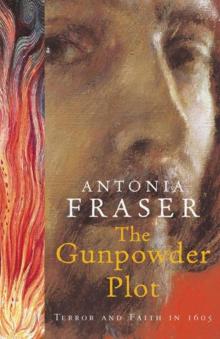 The Gunpowder Plot
The Gunpowder Plot Cromwell
Cromwell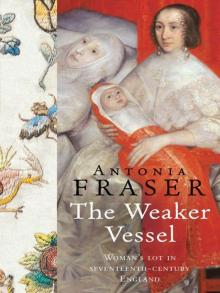 The Weaker Vessel: Women's Lot in Seventeenth-Century England
The Weaker Vessel: Women's Lot in Seventeenth-Century England Marie Antoinette: The Journey
Marie Antoinette: The Journey Oxford Blood
Oxford Blood Your Royal Hostage
Your Royal Hostage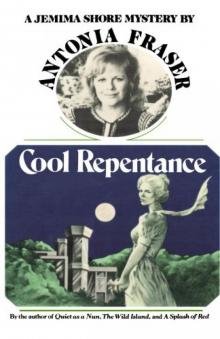 Cool Repentance
Cool Repentance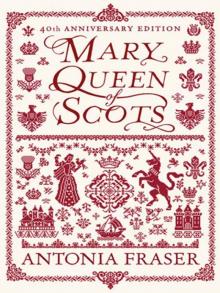 Mary Queen of Scots
Mary Queen of Scots Political Death
Political Death Royal Charles: Charles II and the Restoration
Royal Charles: Charles II and the Restoration My History: A Memoir of Growing Up
My History: A Memoir of Growing Up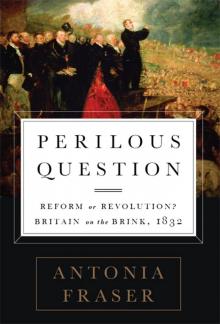 Perilous Question: Reform or Revolution? Britain on the Brink, 1832
Perilous Question: Reform or Revolution? Britain on the Brink, 1832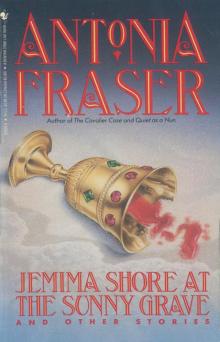 Jemima Shore at the Sunny Grave
Jemima Shore at the Sunny Grave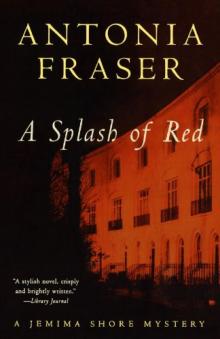 A Splash of Red
A Splash of Red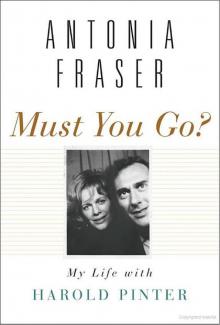 Must You Go?: My Life With Harold Pinter
Must You Go?: My Life With Harold Pinter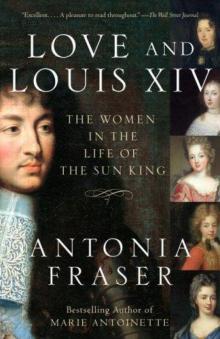 Love and Louis XIV: The Women in the Life of the Sun King
Love and Louis XIV: The Women in the Life of the Sun King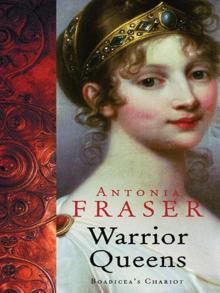 The Warrior Queens
The Warrior Queens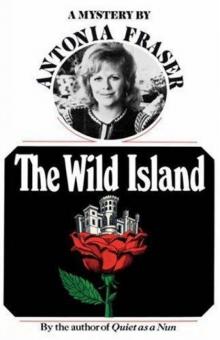 The Wild Island
The Wild Island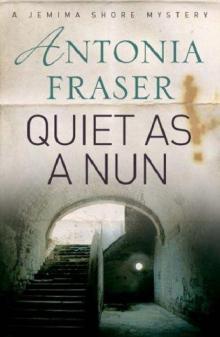 Quiet as a Nun
Quiet as a Nun Perilous Question
Perilous Question Cromwell, the Lord Protector
Cromwell, the Lord Protector Gunpowder Plots
Gunpowder Plots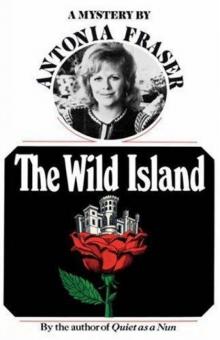 The Wild Island - Jemima Shore 02
The Wild Island - Jemima Shore 02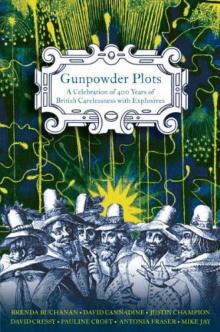 Gunpowder Plots: A Celebration of 400 Years of Bonfire Night
Gunpowder Plots: A Celebration of 400 Years of Bonfire Night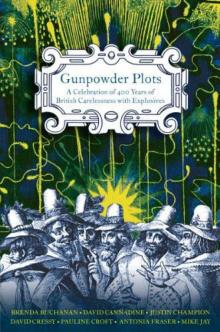 Gunpowder Plots_A Celebration of 400 Years of Bonfire Night
Gunpowder Plots_A Celebration of 400 Years of Bonfire Night Marie Antoinette
Marie Antoinette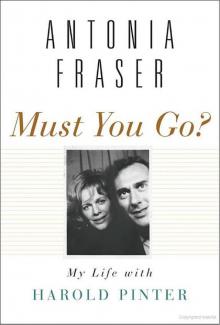 Must You Go?
Must You Go? My History
My History